 |
| Email Home Page |
 |
| Email Home Page |
|
|
|
An Introduction to High-Performance Flashlights
Overview:
Note:
Until recently, virtually all flashlights were simple on/off devices (like the one below) with very limited output. Flashlights like the 4D-cell Maglite were considered to be some of the best, in terms of light output. Those flashlights used an incandescent lamp (hot wire filament producing light). Except for the cheapest flashlights, incandescent lamps are being phased out. The newer flashlights using LEDs produce much more light than most of the flashlights using incandescent lamps. Most people have never seen a flashlight that has anything other than a simple on/off switch. The newer LED flashlights have many modes and various output levels. This makes them much more versatile. If the only options for a flashlight are off and full-on and the flashlight produces an intense output, it makes it almost useless for close-up use (reading a map while someone is driving, etc...) because it's simply too bright. With multiple output levels, the light becomes much more versatile. The various output modes will be described in more detail later.
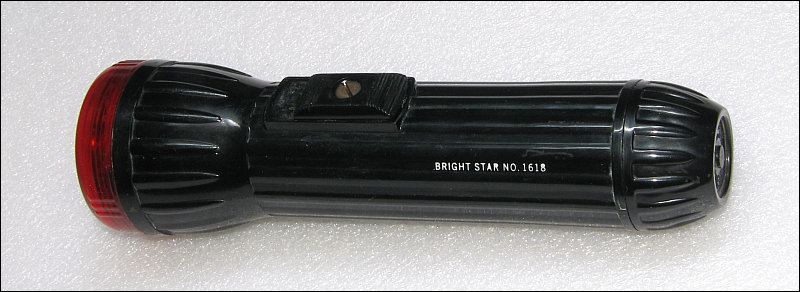 A quick note... Most people think it's normal to have to beat on a flashlight to make it work. We do it without thinking. It's almost as if it's coded into our DNA. Having to beat on a flashlight is normal for older, budget lights but not for high quality lights. High quality lights switch on flawlessly EVERY time.
There are dozens of popular manufacturers of high performance flashlights. Names like 4Sevens, Fenix (pronounced like Phoenix), Nitecore, Surefire, Streamlight are considered some of the best. Most of these lights remain on the cutting edge and, at any point in time, produce lights that produce the most intense output possible. Maglite (a familiar example below) is another very common brand but they're not typically considered to be at the cutting edge of technology (although the new XL100 may be an exception). That doesn't mean that they're not good quality lights but if you're looking for bragging rights (brightest light, smallest size...), Maglite isn't generally in the running. However, if you want a light that's going to be reliable and will last nearly forever, Maglite is still a very good choice.

When you initially get into flashlight collecting, you may be shocked by the prices. Many people are used to buying a two D-cell Rayovac flashlight for $2 at Wal-Mart (really, $2.00, batteries included). Some spend $30 on a two or three D-cell LED Maglite. For most people, these will do everything they need them to do. If you want higher performance flashlights, you'll have to pay significantly more. For example, there are LED flashlights that operate off of one AA or one CR123A battery that produce significantly more light than a 2D-cell Maglite but you can expect to pay at least twice as much for those tiny, high performance lights. For example, the Nitecore EX11 below sells for approximately $60. On average, small single cell high performance LED flashlights cost approximately $50. Small high performance two cell flashlights (those that use two AA or 2 CR123A batteries) can cost $100 or more. The second image below (Maelstrom G5) is one example. It's powered by two CR123A cells or one 18650 lithium-ion cell. It sells for $100-150 and is about 6" long. Custom lights (custom machined housings with high performance emitters and custom reflectors) can cost $500 or more. High performance handheld HID search lights can cost well over $2000.
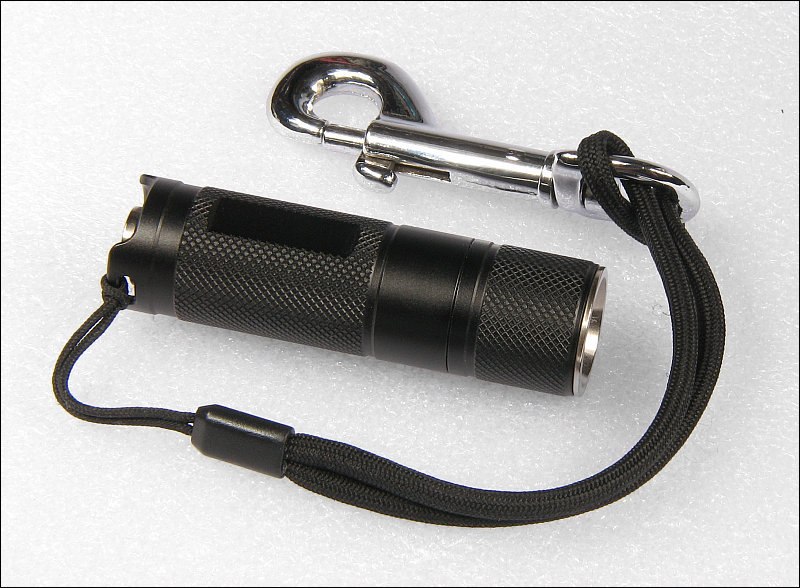

Note:
Incandescent Lamps:
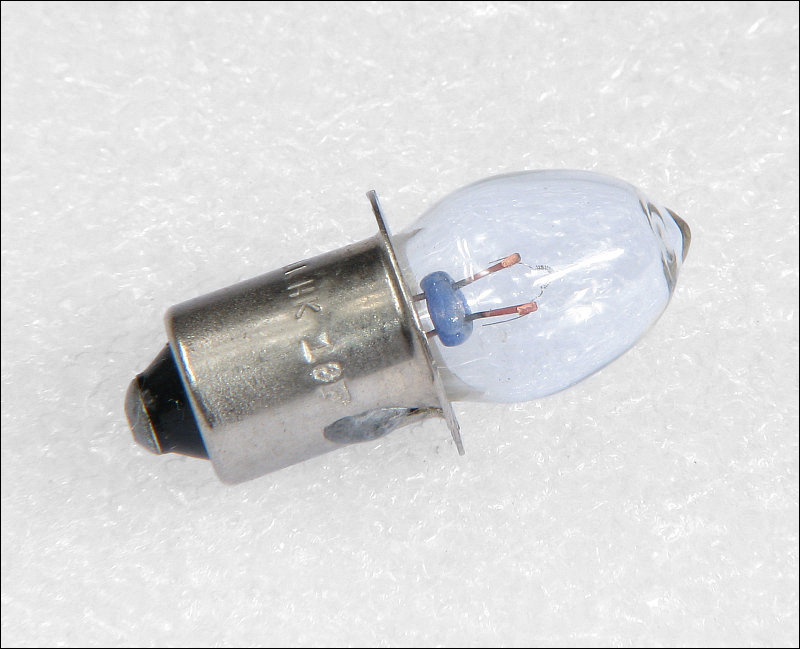 Incandescent lamps have a filament in the glass envelope. The wire that makes up the filament is generally tungsten. In the most common incandescent lamps the glass envelope has the air evacuated, leaving a vacuum. This prevents the tungsten filament from burning (as it would if oxygen were present). This is why an incandescent light bulb instantly burns out when the glass envelope is broken. Other types of incandescent lamps are filled with an inert gas (vs having a vacuum - no gas). Halogen lamps will typically be filled with argon, krypton or xenon gas. Halogen lamps are typically brighter than standard incandescents for a given wattage. That's why many people replace standard lamps with xenon or krypton lamps. The image below is an incandescent lamp with the filament lit. As you can imagine, the wire is VERY hot. When the filament is hot, the tungsten is constantly evaporating. In time, the wire becomes thinner and thinner until it opens (burns out).
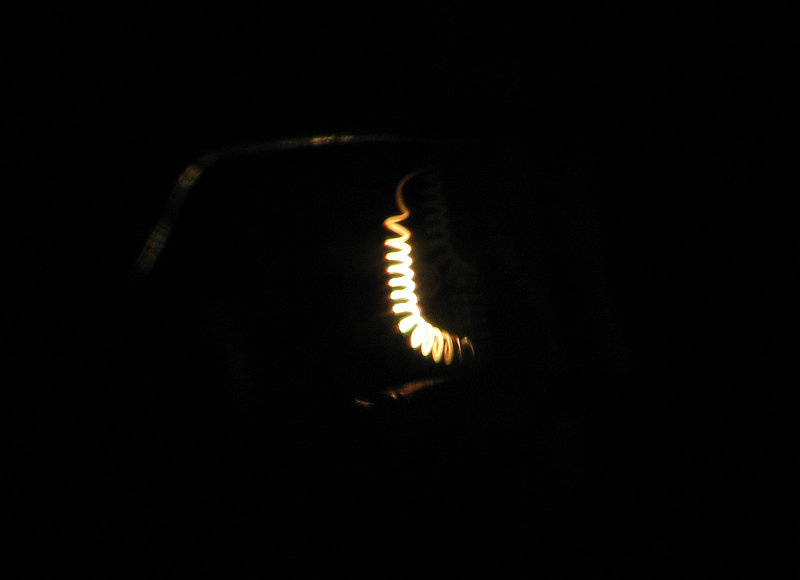
LED Emitters:
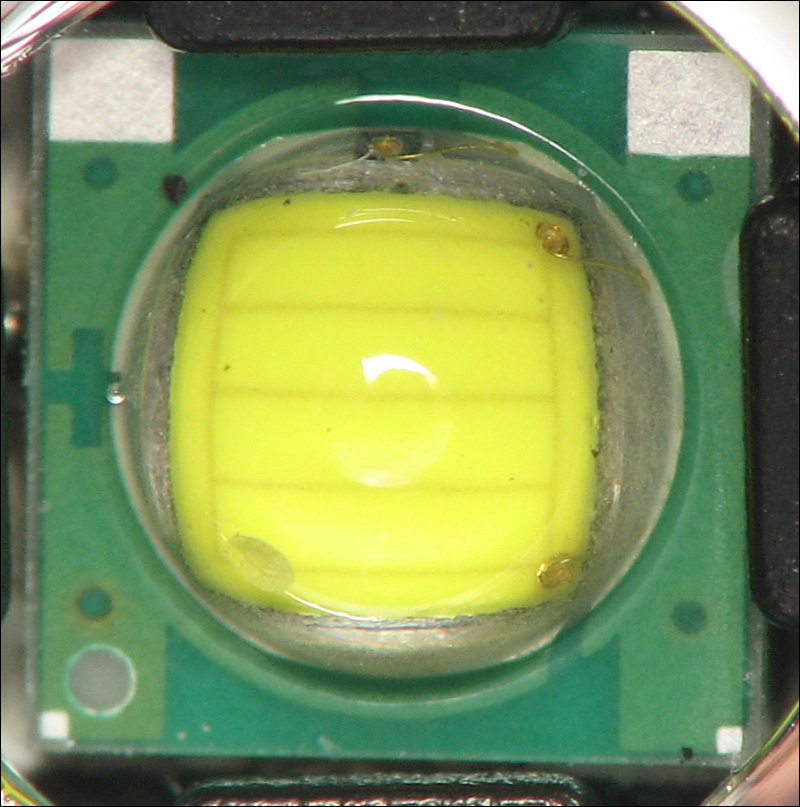 In general, common flashlights don't heat up when used. It's surprising to some that high performance LED flashlights heat up when used at or near the highest output level. The ridges or cooling fins around the head of a flashlight aren't cosmetic, they are there to promote cooling. The ridges increase the surface area of the head and therefore make it easier to dissipate the heat produced by the LED. Without the ridges, the light would get significantly hotter which would mean that the LED would run hotter which could cause the LED to fail prematurely. Power dissipation in the LED causes it to heat up. The LED dissipates heat because there is current flowing through it and there is a voltage drop across it. The voltage drop will generally be between 3.25 and 3.8v and varies depending on the current flowing through it. The voltage drop is the greatest when the LED is being driven the hardest (most current flowing through it). Higher current must flow to make it brighter. If you look at the Ohm's law formula P=I*E (power dissipation equals current flow multiplied by voltage) you can see that increasing either the voltage or the current cause the power dissipation to increase. Since increasing the current flow also forces an increase in the voltage drop, you can see that when you get more output, you produce more heat. This is why the larger flashlights with higher output must have larger heads (which have more surface area). It's also true that, many times, they have larger heads because they have larger reflectors but even if they didn't need larger reflectors, they would still have to have larger heads to keep the operating temperatures low. If you want/need a refresher on Ohm's law, go back to the Ohm's law page of the site. The image below is from a Dorcy flashlight. The LED is the square device in the center. The outer ring is a reflection. THIS is a photo of the LED with no power applied. The blue tint in the photo is due to the polarizers I used. This is a white LED.

HID Tubes:
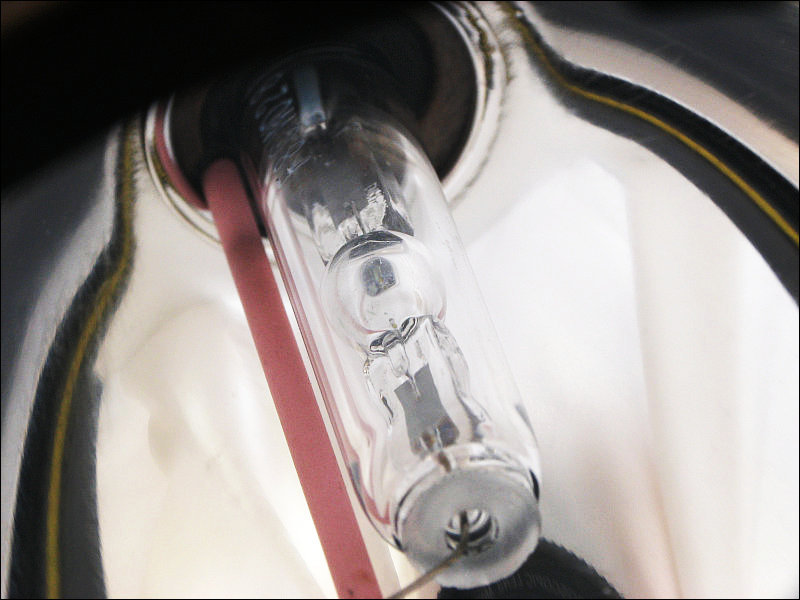 Below is a photo of the HID tube with the arc formed between the electrodes. This arc is incredibly hot. It took less than 2 minutes to get the photo I wanted but if it would have taken any longer I would have needed gloves to keep the light from burning me.
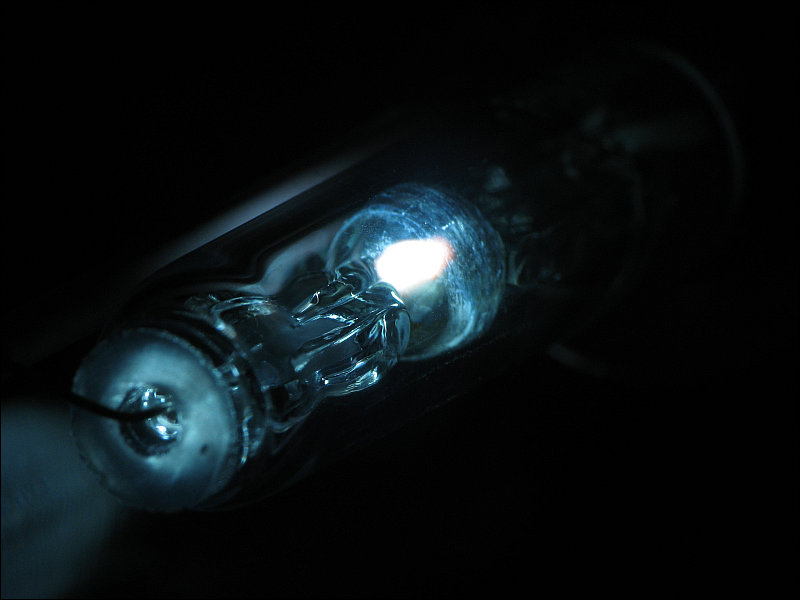
Runtime vs Output Level: Many of the small high-performance flashlights only run about an hour at the maximum output level. In most instances, using the light at 40-50% of full brightness provides more than enough light and can greatly increase the runtime. This will also reduce the cost of replacement batteries. Generally, rechargeable batteries are available for most lights but that's not always the case. For example, lights that produce intense output and use the CR123A batteries may have no option. They have to use the CR123A primary battery. The RCR123 is a rechargeable lithium-ion battery but it can't produce the current required by some of the high performance lights. If you have a light that must use the CR123A batteries, buy them online. They're about 1/3 the cost compared to local retailers.
Regulation: Lights that are not directly driven use a 'driver'. There are several types of drivers. For flashlights that use a voltage source that doesn't have enough voltage to drive the LED directly (i.e. a flashlight with a single 1.5 volt AA battery driving an LED that requires 3+ volts to operate), the driver will have to be a boost regulator/converter. For flashlights that easily have enough (or too much) voltage to drive the LED directly, the regulator/driver will be a 'buck regulator'. There are driver ICs that are buck/boost drivers but I don't know if they're used in any flashlights. For most driver/regulators, they use 'current' regulation instead of 'voltage' regulation. This is because the output of the LED is determined by the current flowing through it. For regulated flashlights, the output will generally be absolutely constant until the battery is drained. The output could go from full to almost no output within just a few minutes. When looking at runtime graphs for regulated lights, it's common for small, high performance lights to operate for about an hour and a half at 100% brightness and within approximately 10 minutes go from 100% to VERY low output (some simply shut off). You'll see the term PWM (Pulse Width Modulation). Pulse width modulation is an efficient method of controlling current or voltage. In general, there are two types of regulators, 'linear' and 'switching'. Linear regulators provide good regulation and are very simple but they're very inefficient. Inefficiency is not good for battery powered devices. Switching regulators are much more efficient. Switching regulators are more complex but circuit design is becoming simpler due to the availability of integrated circuits (chips) that can perform as well as discrete components. The input/control circuit and the switching transistors are all in one tiny package. A regulator that uses pulse width modulation is a type of switching regulator. In a switching power supply with no regulation, the pulse width is constant. In a PWM switching regulator, the pulse width varies to control the voltage or current in a circuit. In the following image, you can see that there are three different switching waveforms. The top one is only 'on' 20% of the time which means it's 'off' 80% of the time. If this were driving an LED, the LED would be relatively dim at 20% duty cycle. Bear in mind that the switching is so fast that it's not visible. The second waveform shows a square wave that's on 50% of the time. This would make the LED moderately bright. The last one has a 90% duty cycle (on 90% of the time). This would make an LED almost as bright as it could possibly be with the available voltage. Driving it directly (100% duty cycle) would make it only slightly brighter. Some flashlight manufacturers may choose to never drive an LED at the equivalent of a 100% duty cycle until the battery voltage drops a bit. In effect, this would allow a longer runtime with no drop in brightness. Directly driven LEDs start to dim almost immediately and continue to get dimmer as the batteries become discharged. Starting at 80-90% gives the regulator a bit of 'headroom' to work with. As the batteries become discharged, the pulse width gradually increases to keep the current through the LED constant. The LED brightness will remain constant until the batteries become discharged to a point that the 100% duty cycle (fully on) cannot maintain the current. At this point, the LED will start to become dimmer (it's brightness will follow the battery voltage). Boost regulators work in much the same way but they must boost the voltage. They use the pulse width to boost it just to the voltage or current required.
The following light (Proton Pro) uses an LTC3401 (<<--click to view the datasheet for the IC) synchronous boost converter/regulator IC to produce the voltage required to drive the LED. In a synchronous boost converter, one transistor (a transistor is a fast electronic switch) grounds an inductor (a coil of wire) and then releases it. The coil acts much like a spring when the transistor switches off. Since the other end of the coil is connected to the positive terminal of the power supply (the positive terminal of the battery here), the voltage on the released end of the coil springs up and over the power supply voltage. This 'higher-than-battery' voltage is passed through another transistor which passes the voltage to the LED. The output voltage is monitored by the IC and is regulated. The regulated voltage is determined by the value of two resistors (which form a voltage divider). A fraction of the output voltage is fed back to a comparator which determines if the voltage is too high or too low by comparing it to a reference voltage. The output of the first comparator and a sawtooth waveform are fed into another comparator. The point where the voltage from the first comparator matches the instantaneous sawtooth waveform voltage, determines the pulse width.
 In the images below, you can see all of the components. The small IC with 10 legs is the LTC3401. There is another IC under the switch. That's the microcontroller that determines the modes for the flashlight. On the bottom of the board, there is an inductor (green component) and a diode. The diode helps take some of the load off of the IC and protects it from over-voltage. The brown components below are ceramic capacitors. The components with the numbers on them are resistors.
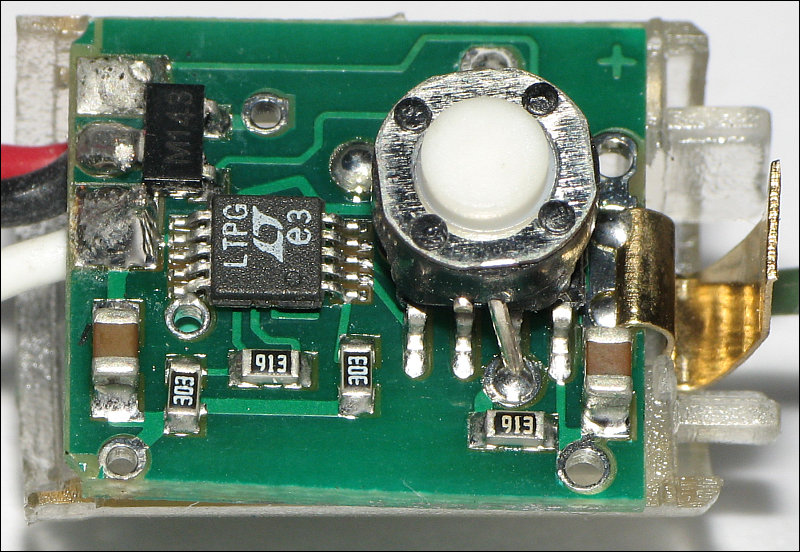

The UI (User Interface) is the way the user controls the flashlight's output. Most flashlights have a single way (either clicking or twisting) of accessing all modes. To access the various modes, you have to click/twist in a specific sequence. This allows you to select the various modes and brightness. For example, the UI for the Preon 2 light from 4Sevens requires that you click the rear switch 3 times in succession to step through the 3 brightness levels (low, medium, high). The Preon 1 is a twisty and has the same basic interface but instead of clicking, you twist the bezel 3 times in succession. Most high-end flashlights have controllers that can remember the last mode used and will return to it when it's switched back on. For example, if you generally need the output to be only 25% of the maximum output, you can program most high-end flashlights to turn on at that level. If there is no memory, you'll have to re-adjust the output each time you switch the flashlight on. Memory isn't important if you only need to use a light occasionally but if you have an EDC (Every Day Carry) light that you use daily for the same types of tasks, you need a light with a memory (especially if the light produces significantly more light than you need for those common tasks). As of now, Maglite has the most unique user interface. The XL100 uses a position sensor to control/adjust the output level, strobe flash rate and lockout. A demo can be seen on YouTube. Click HERE to view it (please email me if the link goes dead).
Twisty vs Clicky:
Flashlights that you'll commonly see in retail outlets are generally designed to operate off of the most common cell types (AAA, AA, C and D-cells). It's generally assumed that the average user will use alkaline cells in them. These flashlights will operate off of batteries with other types of chemistries (lithium, NiMH, NiCd...) but most people won't use anything but alkaline batteries (although, this may be changing as rechargeable batteries continue to improve). For most users (those who don't collect flashlights as a hobby), alkalines are a good choice. This is because they'll use the flashlight only a few times a year for a few minutes at a time. Alkaline batteries can maintain a charge for many years and are likely to be charged when the flashlight is needed (assuming that they weren't discharged when the flashlight was previously used). For flashlights that are rarely used, lithium batteries are another good choice. Lithium, batteries can remain charged for 10 years or more. Neither alkaline or standard lithium batteries are rechargeable (although, they do make rechargeable lithium batteries- lithium-ion and lithium polymer are two examples). Don't try to recharge a non-rechargeable battery, it will overheat and may explode.
Note: People who buy/use high performance flashlights often need something other than alkalines. One reason is that they use their flashlights a lot more than the average person. Using rechargeable batteries over alkalines saves a lot of money. The initial cost is greater but the savings over time is worth it. The most popular types of batteries for high-performance flashlights are NiMH (Nickel Metal-Hydride). These are readily available and relatively inexpensive. This is a good battery if you use your flashlight a lot. It's not so great, however, if you only use the flashlight occasionally. Most NiMH batteries self-discharge to some degree and won't be fully charged if the flashlight is rarely used. In the following photo, you can see 4 types of batteries that can be used in flashlights that are designed to operate off of AA-cell batteries. They are, from left to right, alkaline, hybrid low self-discharge NiMH, lithium and standard NiMH. If you've ever paid attention to the fine print on a battery, you likely noticed that alkaline batteries are 1.5v batteries. Lithium primary batteries like the one here are also 1.5v. The re-chargeables are 1.2v batteries. In general, most devices that can operate off of 1.5v primary batteries can run off of NiMH batteries. There was one instance where they would not, however. I use a lighted magnifying glass to read very tiny markings on electronic components. The light source is an LED directly driven from two AAA cells. Since the forward voltage of the LED is greater than the 2.4v from the batteries (two 1.2v cells in series), the LED would not illuminate with the re-chargeables.
 High-performance flashlights often draw a significant amount of current from the batteries. NiMH and lithium batteries are a good choice for high-current applications. Standard lithium batteries are not rechargeable but store more energy than most other types of batteries. NiMH have the advantage of being rechargeable. Earlier, it was stated that NiMH batteries self-discharge. There is a newer NiMH that self discharges at a much lower rate. They're called hybrid NiMH batteries. They typically have a lower capacity (they store less energy) than the standard NiMH batteries but are better for flashlights (or other electrical devices) that aren't used very often. The Sanyo Eneloop is a very popular hybrid NiMH battery. Standard flashlights draw no current when off. Some of the high-performance flashlights draw a very small current from the batteries when they're off. If you have a flashlight that draws current when off, or if you don't know if it draws current when it's off and the flashlight is mainly to be used in emergencies, store the batteries with the flashlight but not in the flashlight. Some flashlights give a range of voltages that it can operate on (often with no difference in brightness). For example, the 4Sevens Maelstrom G5 has an operating range of 2.7v to 12v. It's primarily designed to use two CR123A batteries. These are 3v each and in series produce 6v. The light will also work well on one rechargeable 18650 lithium-ion battery. The 18650 cell is only 3.7v but the light's performance is essentially the same.
 In the photo above, you see two sets of CR123A batteries. The ones on the left are individual batteries. The ones on the right are shrink-wrapped together. This ensures that you don't mix old and new batteries and makes it a bit easier to replace batteries. It's important that you don't mix old and new batteries. If you install a dead battery with a new battery, the polarity of the dead battery could be forced to reverse. At the very least, this could cause the battery to swell and leak inside your flashlight. Leakage could cause damage to the light. Swelling could make it very difficult to remove the battery. This isn't a big problem in many other devices because the batteries are not typically pushed to their limits. In high performance lights, the current draw can be excessive which makes it more critical that the batteries match as closely as possible. Below there are 3 batteries of approximately the same size. Two are 3.0v and one is 3.6v. As above, the orange battery is a lithium primary battery. The other two are rechargeable lithium-ion batteries. In many lights, these are all interchangeable but that's not always the case. In some lights, the longer 16340 (16mm x 34mm approximately) may be too long. In some lights, the added voltage could cause the light to fail or malfunction.
 A couple of examples... The EX11 that was shown previously on this page uses a cylinder that extends from the back of the light to the control board. The cylinder is used to make contact with the circuit board. The RCR123 and the CR123 are identical in length but the shoulder on the button end of the battery of the RCR123 is 1mm longer and won't allow the light to function/switch properly. The added length of the 16340 (which is actually 16.5mm x 36mm) won't allow the EX11 to function at all. The battery is longer than the cylinder. In the JetBeam PC10 (below), all 3 batteries will work but the light functions differently with the higher voltage 16340 battery. The light is supposed to have turbo mode when the head is fully tight. When it's loosened a bit, the light should have 5 modes (two flash modes and 3 modes of varying brightness below turbo mode - high, medium and low). When either of the 3v batteries (or a slightly discharged 3.6v battery) is used, the light works in all modes. When used with a 3.6v battery, the high mode (which is supposed to be below the turbo mode) produces turbo level output. One of the similar lights (the PA10) is even more hanicapped. With a 14500 lithium-ion battery (3.6v), the light will only function in turbo mode. If you use a lithium primary battery, an alkaline battery or a rechargeable AA battery, it has the turbo plus 5 modes like the PC10. The drawback to that is that the output is MUCH less with anything other than the 3.6v lithium-ion battery. It's still a good light but it's hard for some of us to use a light with batteries that produce a maximum of 200 lumens when it's capable of a maximum of 650 lumens (lumens from specs, not measured or verified).
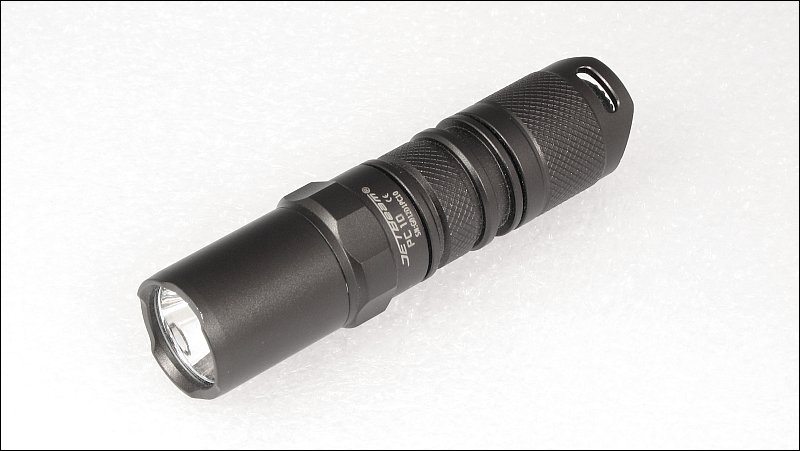 The 18650 cell above has a 'button top'. On some lithium-ion rechargeable batteries, the top terminal is as flat as the bottom terminal on this cell. This makes it very difficult to produce a mechanical protection feature that prevents the batteries from being installed with reverse polarity. Applying voltage to a circuit with reverse polarity (installing the batteries backwards in the case of battery powered devices) generally causes the circuit to fail catastrophically. With the button, the flashlight manufacturer can recess the positive terminal in the light slightly and if the battery is installed backwards, the flat terminal can't make contact with the light's terminal. The image below shows how the guard ring is preventing the straight edge from making contact with the terminal. Some of the lithium-ion cells have no button and therefore won't work with some lights. So that cells without the buttons can make contact with each other when used in series, they (AW batteries, for example) sometimes have bumps on the negative terminals. When the preferred cell is a flat-top cell but the device requires that you use a button cell, you can use a small cylindrical magnet (like THIS) on the positive terminal. The pop-up image is only for illustrative purposes. This was actually placed on the negative terminal for the photo.
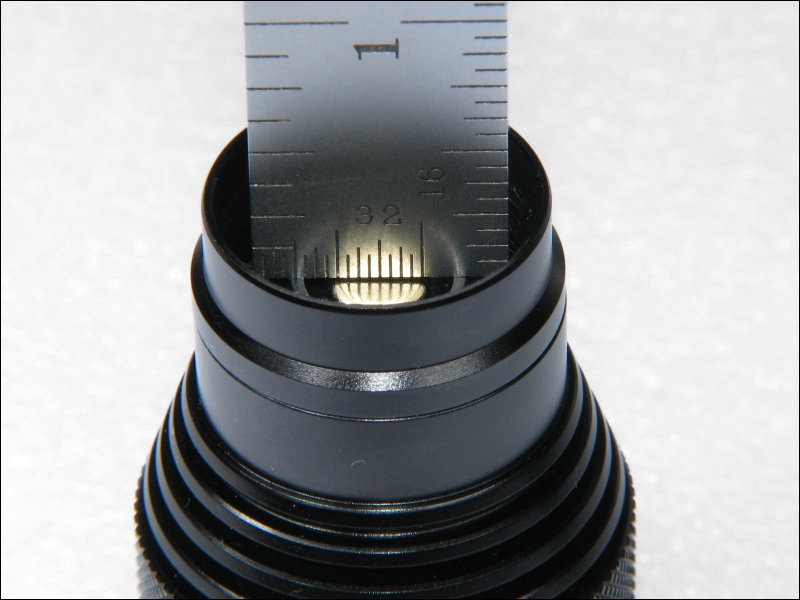
Protected vs Unprotected Lithium-Ion Cells: The newer high-tech batteries in LED based flashlights can require a bit more knowledge than the old incandescent based flashlights with alkaline or carbon-zinc batteries. With the old types of flashlights, you ran them until the batteries were so dead that the flashlight could no longer produce light at a usable level. Of course, those were disposable batteries. The newer battery types can't be used in the same way. Earlier, it was stated that the output of an LED flashlight could drop off quickly as the batteries became discharged. This was because the batteries no longer had enough voltage to overcome the forward voltage of the diode. There is sometimes another reason that the light output will drop abruptly. The 'protected' lithium-ion cells will, in effect, disconnect the terminals from the actual lithium-ion cell. This prevents them from becoming damaged from deep discharging.
Know Your Flashlight: I had the Tenergy 3.0v RCR123A, the UltraFire 16340 3.7v and Titanium Innovations CR123A batteries. The first two of these are rechargeable. The CR123A is not. The Ultra-Fire lasted about 29 minutes before the light went out. The Tenergy RCR123A lasted only 13 minutes before the light went out. A second one went about 15 minutes. I tested two different RCR123As to confirm that it wasn't just one bad/weak battery. The Titanium Innovations lasted much longer and the light gradually fell off. The two rechargeable batteries abruptly switched off. One second, the light was nearly full bright. The next, it was completely off. The primary lithium battery was producing a usable light output at just over 1 hour of runtime. It wasn't full bright but would be enough to allow you to safely walk through a room that was pitch dark without the flashlight. Something else that was interesting was that the PC10 would not switch back on after the CR123 battery had been nearly completely drained. Something like this is important to know if you're in a situation where you really need the light to work. I tried the drained battery in a Thrunite 1C and and a Nitecore EX11. Both of these lights worked with the weak battery and would switch on and off. This means that the last two lights would allow you to switch the light off to save the batteries for when they are really needed. Of course, there is some point where the battery will become so discharged that no light will be able to switch back on. Of course, if you know that you're going into a situation where you will rely on your light for your personal safety (or the safety of others), you would carry extra batteries. Since the lithium-ion batteries have a 10+ year shelf life and cost only about $1 each, keep several in your vehicle, in your home and office in case there is an emergency. Rechargeables are better for most of us for normal use but primary batteries are a good, safe backup. This was mentioned previously but bears repeating. If you need a flashlight that's reliable, it's very hard to beat a Maglite. Many of the small, high-tech lights are very complex and can be prone to fail, especially those pushed to the limits to produce the most output possible from the emitter (LED) that they use. The standard LED Maglite is conservatively designed so it's not so prone to failure. When keeping a flashlight around for emergencies, don't store the batteries in the light. If the light accidentally gets switched on or if the light has parasitic drain (like the EX11), it can drain the batteries and the light will be useless when you need it most. Also don't forget to keep extra batteries on-hand. Lithium-Ion batteries and high quality alkaline batteries have a very long shelf-life. This doesn't mean that they last forever. If you need to buy new batteries, rotate out the older ones and leave the newest ones for emergencies.
Many times, you'll need a light that will allow you to use both hands to perform a specific task (working under the hood of a car, working on an electrical panel with the main breaker switched off, setting up a tent...). A good headlamp is preferable to a normal flashlight. Headlamps (AKA headlights) vary in price and quality as much as normal flashlights. Below are two examples. The first is an inexpensive (Wal-Mart special). When you absolutely need a headlamp, these are better than nothing but the quality isn't great. There are two main problems, in my opinion. The first is that the light patterns are uneven and 'ringy'. The second problem is that the light spectrum that's produced isn't very good. Ideally, you generally want a neutral white light. This renders colors properly. The cheaper lights tend to produce a bluish-white light. The one below produces a combination of bluish white and nearly pure white.
 This next headlamp (Fenix HP11) is much better in virtually all aspects. The light output is greater and much whiter. The pattern is very smooth, especially with the diffuser over the lens. Some prefer a smaller lighter headlamp. I don't mind a heavier headlamp if it gives me more runtime and/or more output. This headlamp has a battery pack that clips onto the back of the headband. When looking for a headlamp with extended runtime and fairly good output, I narrowed the search to those using 4 AA batteries because I had plenty that I use in my cameras. There are other headlamps that use other batteries (single AA, 3 AAA, CR123A, 18650...). You have to decide what's important to you (light weight, output, features, runtime) when looking for a headlamp.
 Other features available on various headlamps include different color LEDs, focusing beams and special output LEDs. Headlamps used for tracking game when they didn't drop when shot. The special LEDs highlight blood drops and make them stand out. I no longer hunt but the reviews on some of the tracking lights are pretty favorable.
One of the most important things that you need to know about charging batteries is that you should not leave them on charge when no one is around to monitor them. The following image shows a very minor incident where a battery overheated. Even though I was in the room, it got this far before I noticed that there was a problem (alerted by the smell of burning plastic). Many times, the damage is far worse. It could have started a fire or exploded. When charging batteries, place the charger on a hard, flat surface. A kitchen counter-top or a similar surface is preferable. If you place it on a table, the table should not have a tablecloth and there should be no decorative cloth or paper material under the charger. If you place the charger on a chair or a bed and there is a problem that causes a battery to overheat, it's much more likely to start a fire. It's also important that the charger is on a hard flat surface so that it can remain cool. Some chargers (particularly those that can charge batteries quickly) rely on convection cooling to keep the electronic components in the charger cool. If it's on a soft surface, convection currents cannot flow, the components cannot cool and are therefore more likely to fail prematurely.
 There are several different types of battery chargers. 'Dumb chargers' simply apply a voltage to the batteries and they charge until the batteries reach the applied voltage or until the circuit 'times out'. The charger below is one such charger. This charger applies 2.4v to the batteries (two 1.2v batteries in series). It will drive as much as 165mA (0.165A) into the batteries. The actual current flow will depend on the condition of the batteries. If you look closely at THIS image, you can see that the contacts put the batteries in series. There's no way to properly charge batteries properly when you're charging one battery through another battery. When batteries are identical, it can be done when there is no other option but batteries are rarely identical, especially after they've been charged and discharged repeatedly.
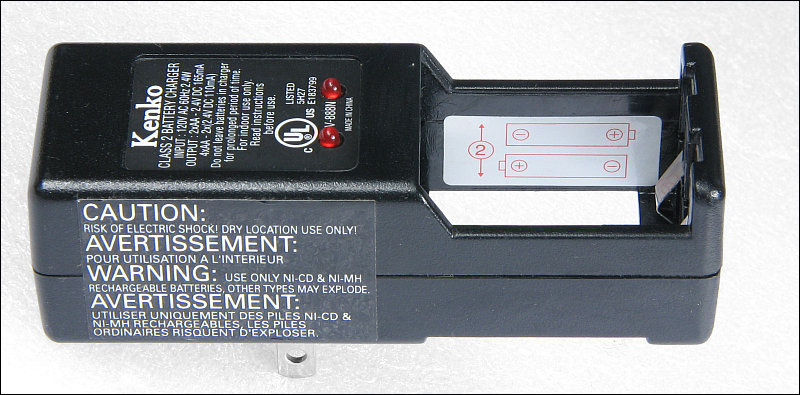 Better, more sophisticated, chargers use microprocessors to control the charging cycle. These chargers (referred to as smart chargers) often use the 'delta-V' charging method. When NiMH batteries are charged with a constant current, the battery voltage will drop just a bit as the batteries become fully charged. In general, this is generally considered to be the best way to charge a NiMH battery. As a safety measure, some chargers will stop charging at a preset (safe) voltage for times when the delta-V dip isn't significant enough for the charger to detect. The following is an MH-C808M. It's a relatively good charger. It uses the delta-V charging method. It can 'soft' charge (slow charge) batteries which is often better than fast charging because it doesn't produce as much heating. This charger can also recondition batteries. It reconditions them by charging, discharging them and then recharging them. This helps remove any 'memory' the battery may have developed. To learn more about the memory effect (AKA voltage depletion or voltage depression), click HERE.

Note:
Charge/Discharge Rate: When reading through the various forums, you'll see charge/discharge rates like 1C or C/2. The C refers to the mAh rating of the battery. If you have a NiMH battery rated at 2500mAh (equal to 2.5Ah) and the maximum recommended charge (or discharge) rate is 1C, you can charge it at no more than 2.5 amps. For a charge rate of C/2, you could charge with no more than 1.25 amps of current. The previous charger (MH-C808M) is a relatively sophisticated charger but newer chargers can do even more. The MH-C9000 (and others) allow you to control the charge/discharge rates. They will even analyze the batteries and give the true mAh ratings of the batteries. Many manufacturers exaggerate their ratings. Even good batteries that originally met spec will deteriorate as they get older. There have been instances where one battery of a group (group of 4 batteries in my case) has failed. The batteries seemed that they were not holding a charge. In a digital camera, there would be a message to replace the batteries after taking only a few photos. It was difficult to determine if one or all were defective. The analyzer found the defective battery. Since I had others that were purchased at the same time as the one that failed, I simply used one of those with the three remaining batteries. Remember, you shouldn't mix batteries that aren't virtually identical. If four batteries would have been needed and there wasn't another battery from the original batch, the other three would not have been usable in the camera.
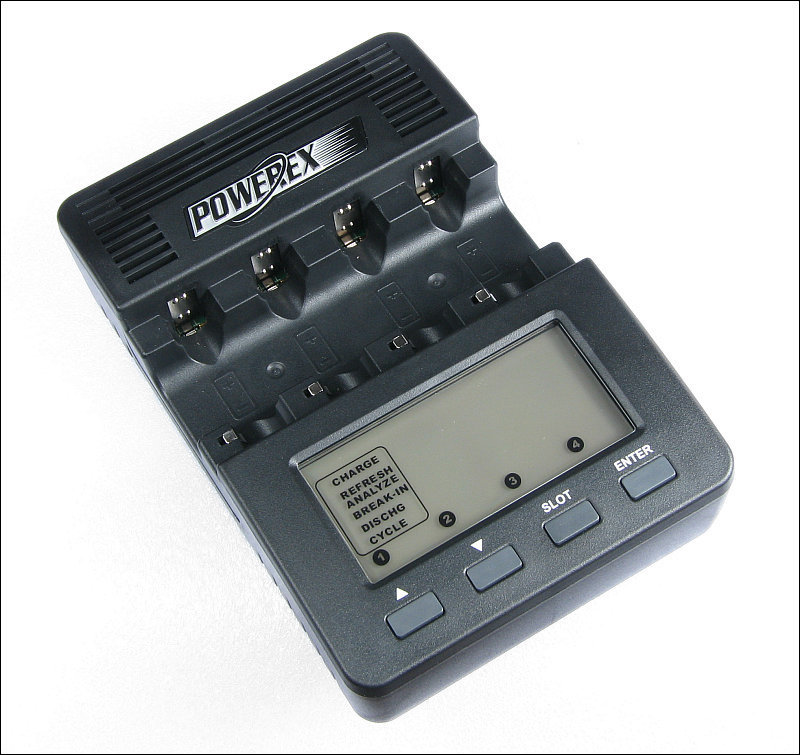
Recharging Lithium-Ion Batteries: When using a charger specifically designed to re-charge lithium-ion batteries, there is little risk of fire or explosion (but you should not leave the charging batteries un-attended). If you're using a charger that was not specifically designed to recharge the lithium-ion cells that you have, you stand a real risk of fire. A lithium-ion battery fire is very dangerous. It burns hotter than many other fires and can be difficult to put out. If you have a device with lithium-ion battery packs (multiple batteries connected together), there can be multiple explosions and flare-ups. If you're using a charger that doesn't have all of the safety features built in (many people like to try to make their own chargers to save a bit of money), charge them on a steel table, preferably with a cover or shield to prevent flames or shrapnel from escaping. Used properly, lithium-ion batteries are safe but you must understand that they're not as idiot proof as other battery types.
There are some flashlights that have no reflector at all (bare LED, like the one below). They simply flood an area with light. Of course, something like this (Photon Light - Photon II keychain light) can't illuminate a large area intensely but this one lights a very wide area immediately in front of the light out to about 20 feet well enough that you can walk safely through poorly lit areas. If you need a very small light, the ones sold by Photon Light are a good choice. Cheaper ones work but not nearly as well. The light distribution is often poor and badly tinted (generally purple) due to poor quality LEDs.
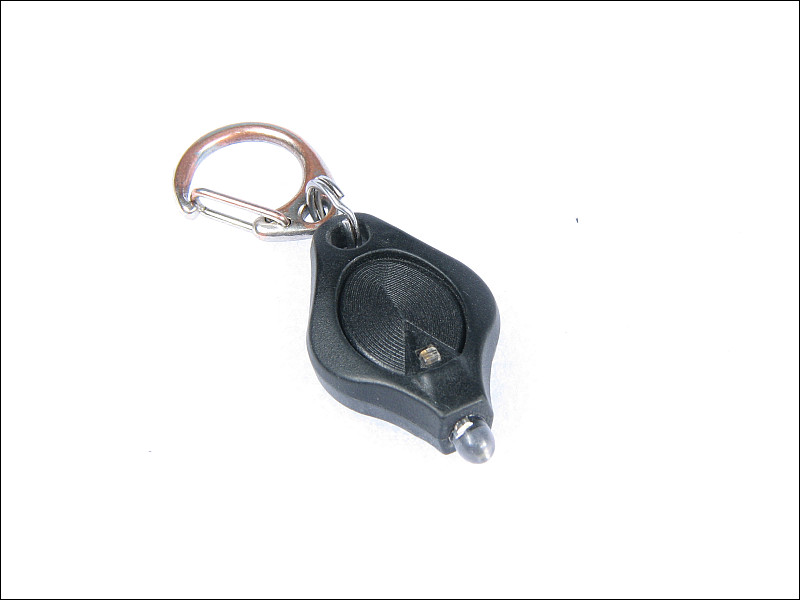
Flood vs Spot: You may hear the terms 'task light' and 'search light'. A task light is typically a light with reasonably good output with a floody beam pattern that illuminates the general area where you're working. A search light is typically a light with very strong output and beam pattern that's fairly concentrated. They are typically used in search and rescue operations. I tend to buy lights that have a good throw but they're only good to compare to my friends' newest thrower. For example, I purchased a Maelstrom G5 (6" long). It's a nice light but for most of my needs, it's utterly useless. I RARELY need to find something 100 yards away. A light like the tiny EX11 (3" long) I have is much better for lighting objects within 10-15 feet. It will light a much larger are but, again, that's not generally needed. Buy the light that best suits the task.
Light Output Specifications: To measure the light output accurately (it's doubtful that many manufacturers bother to do so), an integrating sphere or a goniometer is used. The integrating sphere is a reflective sphere that allows a light meter to measure all of the light produced. The goniometer is another light-measuring device but has a bit more flexibility than the integrating sphere. To read more on these, click HERE. This link is from the Lawrence Berkeley National Laboratory.
Reflector Types:
Lense Types: There is another type of lens called an aspheric lens. It's curved (see below), not flat like a standard lens. These lenses are designed to focus the light. Some are so effective that they can actually project an image of the LED on a surface 100+ yards away.

There are many different flashlight manufacturers. As far as I know, none of them make their own emitters (LEDs). They rely on a handful of LED producers. The following are a few of the one that produce the brightest, most efficient LEDs.
Cree:

Luminus:
Philips LumiLEDs:
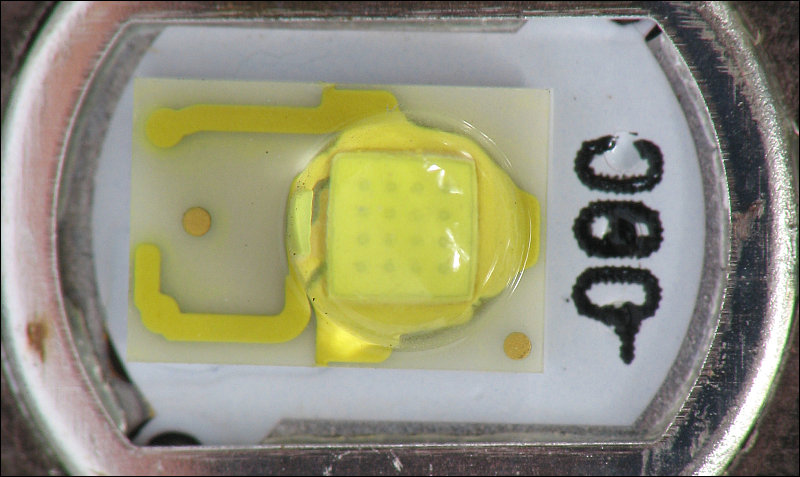
Intrinsically Safe Flashlights:
Many of the collectors flashlights like to make modifications to make the better suit their needs. This can include changing the light source, modifying or replacing the reflector to work with different light sources, modifying the case to accept a different type of power source, etc. The list below will grow as I find more examples.
Replacing the Light Source:
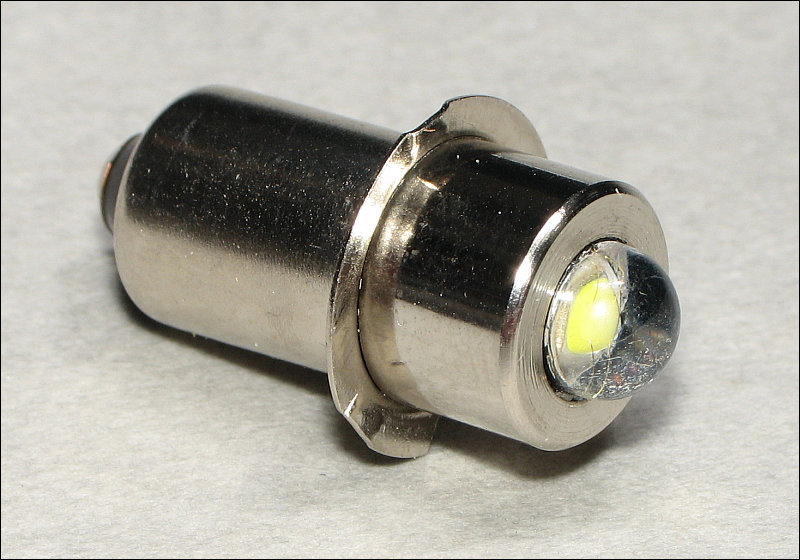
 The drop-in module below is a 3 watt module with the same LED (if I'm not mistaken) that's used in the new LED Maglite. The output of the 2D LED Maglite and this LED module in a Maglite that originally had an incandescent lamp are about the same. This module is the TerraLUX TLE-6EXB and costs about $17. it's probably worth the cost to bring an old Maglite up to date. If you don't own a Maglite, it's probably better to buy a new LED Maglite.
 These are the simplest and least expensive of the mods you can perform on Maglites. There are more expensive modules that can be purchased. Some drop in, some require that you replace or modify the reflector. For higher powered, brighter drop-ins, visit the Malkoff site.
Lanyard:
Extra O-Rings:
Pocket Clips:
I've purchased items from the following sellers/sites and have had no problems.
If you have any questions about any of the following lights, email me.
Above, on this page, you read where various batteries caused some of the lights to malfunction. That's one example where you may need to do a bit of troubleshooting if the light appears to be malfunctioning. Another common problem is bad connections. For older lights, it's simply a matter of cleaning the various contacts for the switch. For more advanced/newer light, there are other problems that you should be aware of. In the three following images, you can see the internals of various lights. In all photos, you see two indentations near the outer perimeter. These are used to turn the internal nut. In all three lights, these have become loose and the lights failed to operate properly. In the first image (JetBeam PC10) and the last image (Olight T10), this area becomes accessible when you remove the end of the light (as you do when replacing the batteries). The middle light (IncenDio V3+), the back bezel ring and button cap has to be removed to access this area. The IncenDio supplied a set of tweezers to turn the nut. You can use tweezers or snap-ring pliers if nothing is supplied with your light. In all three lights, the lights operated intermittently and then would not switch on at all. Tightening the nuts (some of which had left-hand threads -- tightened by turning counter-clockwise instead of clockwise) returned all of these lights to proper working order.
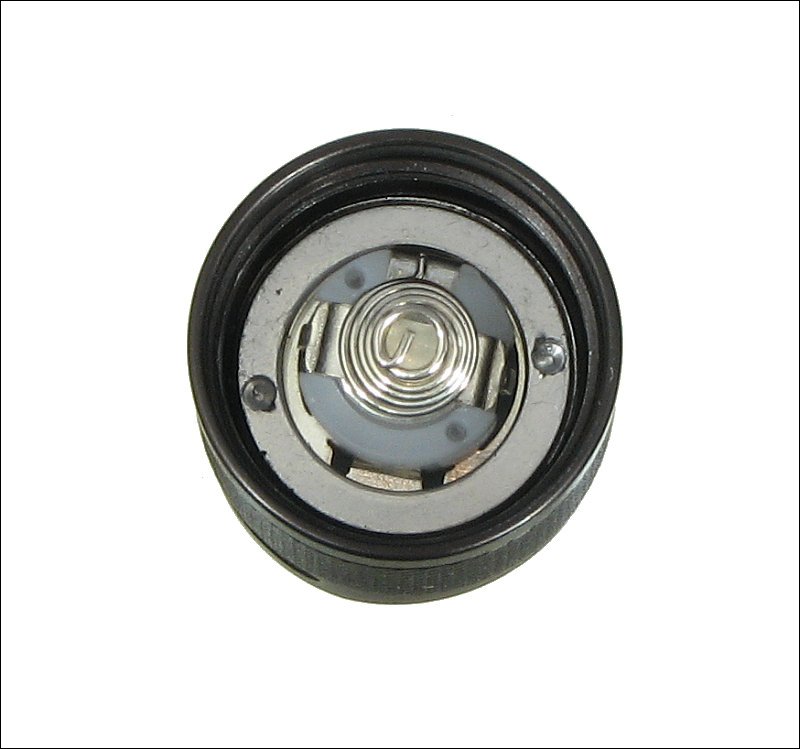
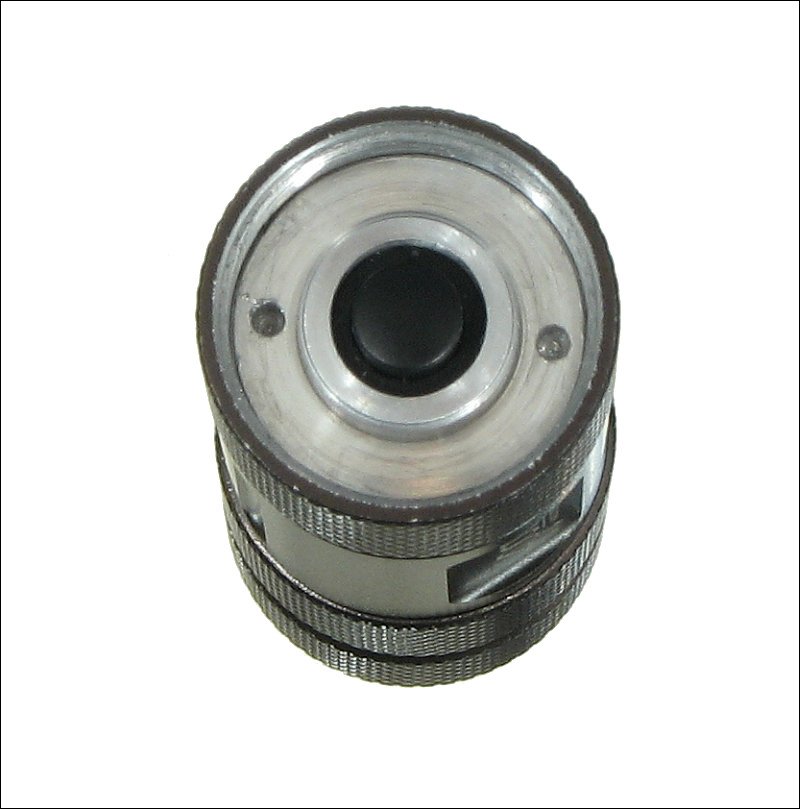
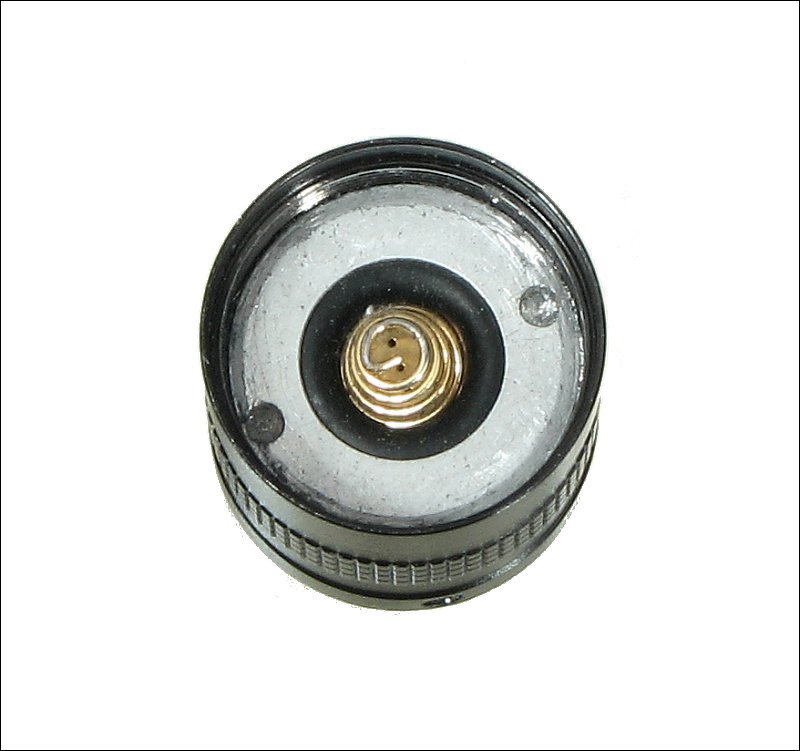 Many of the lights on this page are 'high-tech' lights with advanced electronics. Many of the cheaper (low-tech) lights and headlamps are very simple. One big difference is the way they use the energy in the battery. The advanced lights use a boost regulator to increase the output voltage of the battery. This allows the voltage to the LED to remain constant as the battery voltage drops. This gives a more constant light output as the battery charge is depleted. There are pros and cons to this. When the battery reaches a certain point, the light may unexpectedly shut down. This could be due to the protection in the battery (if it has a protection circuit) or the programming/design in the regulator/controller circuit. The less advanced (low-tech) lights are like the old-style lights that simply get dimmer as the battery is drained with one significant difference. The old incandescent based lights, using primary cells (non-rechargeable) would provide some illumination until the batteries were essentially completely drained. The simple (no boost regulator) LED based lights have two reasons to drop out unexpectedly or with little warning. When using primary cells, the LED forward voltage must be met for the LED to produce output. As soon as the battery voltage drops to that point, the LED output will quickly drop and then stop. When the low-tech lights use lithium-ion type batteries that have protection circuits, that protection circuit can shut down the battery and the light will stop working.
If you try to change the color of the illumination, be aware that the LEDs produce a very narrow spectrum of colors. If the dash has a green, blue or red (or any other color), a different color LED may be very bright but not be able to pass that illumination to the display. As a common example, the blinker indicators are green. The high-beam indicator is blue and the dash lighting may be red. For that vehicle, you would need red, green and blue LEDs to get acceptable brightness. White LEDs may work for all in some vehicles. In the image below, there are 3 different color LEDs in two different styles. The housing (green, blue and white tells you what color the LEDs are. The black base is the 1/4 turn lock that the LED modules are held in. They lock into the dash cluster in your venicle. The modules with LEDs facing all directions work better where the light is offset or where there is no lightpipe in the cluster.
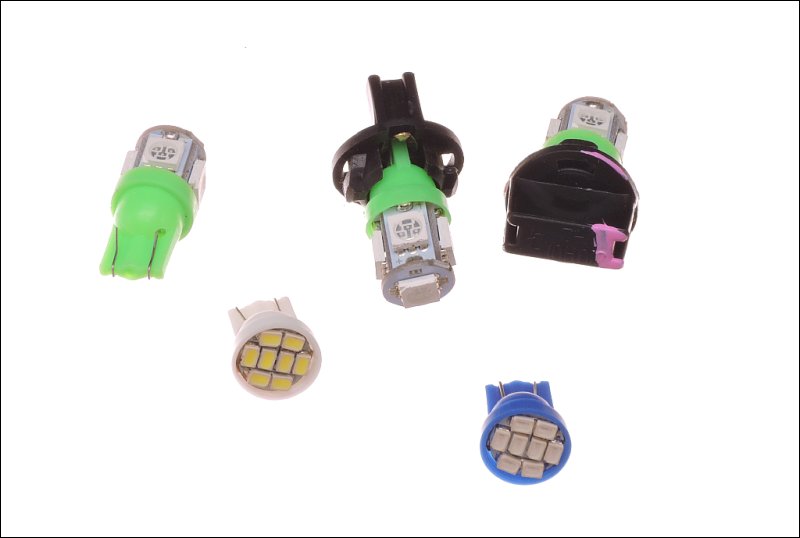 Most of the cheap LED modules that go into the twist-lock type of lighting holders are polarity sensitive. This means that they may need to be turned 180° if they do not light up when initially installed. The pink paint on the bases above indicate the positive side of the LED. Some of the bayonet type holders are incompatible with the modules that have wire conductors on both sides of the flange of the LED module. Most of the lamp holders are OK with shorting both sides of the flange. Others will see it as a short circuit and will blow the fuse. From my experience, order extras. I've seen about a 20% failure rate, most within a short time after installation. This was most common with the LEDs above that face in all directions. None of the others failed (yet).
Off-road/fog lights:
 With the lights above, I was hoping that they were using the XM-L that can be driven to about 10 watts. Of course, they couldn't drive 18 LEDs to 10 watts with no more heatsink than they have on these lights but I was hoping that they were at least driving then to about 3w each which would have been 54 watts. Of course, these chinese made lights are so cheap, it isn't too painful to experiment. For these lights, I took them apart and found that they were using a low-value resistor (0.12 ohm, I think) to sense current and provide regulation. Reducing the value of that resistor (by paralleling more resistors), the lights drew more current and produced a bit more output but it probably wasn't worth the trouble. One thing I found was that while the overall construction wasn't too bad, they didn't apply nearly enough heatsink compound between the LED board and the heatsink. This meant that the LEDs wouldn't be able to get rid of the heat that they were producing. With the stock power level, this may have been OK. It was surprising to see that they skimped on the heatsink compound when most of the restof the construction was decent.
Worklight Power Sources:

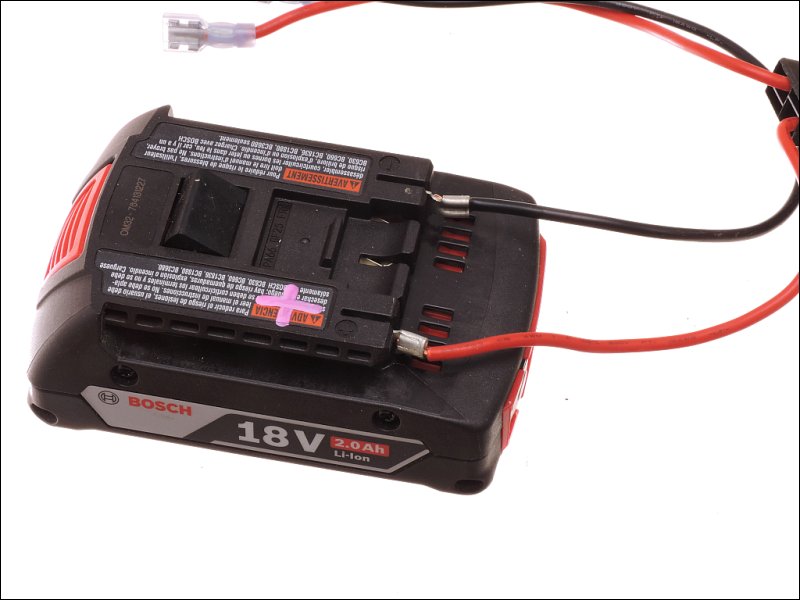 You can use a straight quick connect to make the connection in the slots in the battery. Be sure to get the polarity correct. For a mount, you can use a piece of lumber (plywood or a square piece of 2x6) or a magnet (as is available from Harbor Freight). If using a battery, a fuse should be used in series with the positive wire. A 3 amp fuse is sufficient for most cheap ebay type LED lights but the maximum fuse rating will be determined by the size of the wire. If you don't have a fuse holder, you can use a couple of female quick-connects held together with a zip-tie (so they stay inline with the terminals on the ATC/ATO fuse). The fuse holder can be used to remind you which wire is positive (if not using color-coded wire). Mark the terminal on the battery with a marker or paint pen (clean area with solvent first if using a paint pen) for polarity.

|
|
|
|